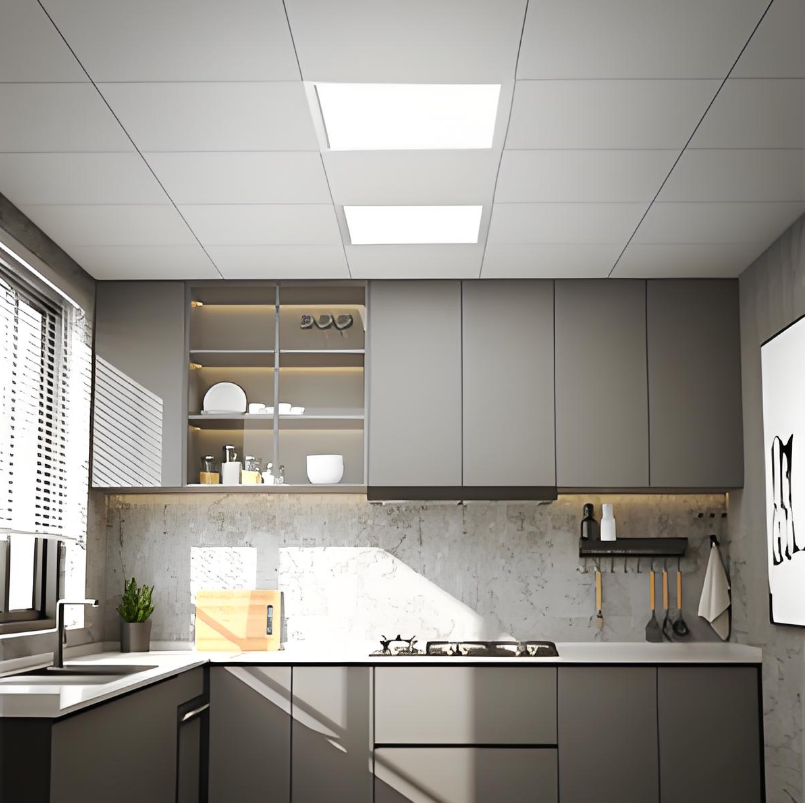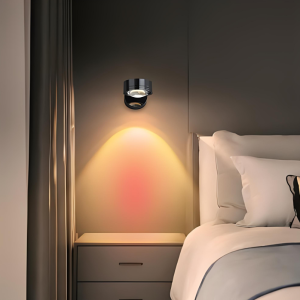
Revamp Your Living Room with a Stunning Ceiling Light
A ceiling light plays a crucial role in creating a comfortable and inviting living room. It not only provides illumination but also sets the mood and ambiance of the space. The right ceiling light can transform a dull and uninspiring room into a warm and welcoming haven. Whether you’re entertaining guests or simply relaxing with your family, having the right lighting can make all the difference.
The impact of lighting on mood and ambiance cannot be overstated. Bright, harsh lighting can create a cold and sterile atmosphere, while soft, warm lighting can make a space feel cozy and inviting. A ceiling light is often the main source of light in a living room, so choosing the right one is essential. It should complement your existing décor and enhance the overall style of the room.
Choosing the right ceiling light for your living room has several benefits. It can improve the functionality of the space by providing adequate lighting for various activities such as reading, watching TV, or playing games. It can also enhance the aesthetic appeal of the room by adding a touch of elegance or drama. Additionally, a well-chosen ceiling light can make a small room appear larger or create a focal point in a larger space.
Choosing the Right Style: Tips for Selecting a Ceiling Light that Complements Your Décor
When selecting a ceiling light for your living room, it’s important to consider the overall style of the room. The ceiling light should complement your existing décor and enhance the overall aesthetic appeal of the space. If you have a modern living room with clean lines and minimalist furniture, a sleek and contemporary ceiling light would be a great choice. On the other hand, if you have a traditional living room with ornate furniture and rich colors, a chandelier or pendant light with intricate details would be more suitable.
To find the perfect fit, explore different styles of ceiling lights. There are countless options available, from modern and industrial to traditional and vintage. Consider the materials, finishes, and shapes that would best complement your living room. For example, if you have a coastal-themed living room, a ceiling light made of natural materials like rattan or seashells would be a great choice. If you have a rustic living room, a ceiling light with a distressed finish or wrought iron details would add a touch of charm.
Size Matters: How to Determine the Right Size of Ceiling Light for Your Living Room
The size of the ceiling light monalisadecor is an important factor to consider when choosing one for your living room. It should be proportionate to the size of the room and the height of the ceiling. A small ceiling light in a large living room would look out of place, while a large ceiling light in a small living room would overwhelm the space.
To determine the appropriate size of ceiling light, start by measuring your living room. Take note of the dimensions of the room, including the length, width, and height. Consider the height of your ceiling as well. As a general rule of thumb, the diameter or width of the ceiling light should be about one-third to one-half the width of the table or seating area it will be placed above.
If you have high ceilings, you can opt for a larger ceiling light to fill the vertical space. However, be mindful not to choose a light that hangs too low and obstructs movement in the room. If you have low ceilings, consider flush mount or semi-flush mount ceiling lights that sit close to the ceiling and provide ample lighting without taking up too much space.
Use a size guide to help you choose the right size of ceiling light. Many lighting retailers provide guidelines based on room size and ceiling height to help you make an informed decision. Keep in mind that these are just guidelines and personal preference should also be taken into account.
Layering Light: The Benefits of Using Multiple Ceiling Lights in Your Living Room
Creating a layered lighting effect is a great way to make your living room more dynamic and inviting. Instead of relying solely on a single ceiling light, consider using multiple ceiling lights to illuminate different areas of the room. This not only provides better overall lighting but also adds depth and dimension to the space.
Using multiple ceiling lights allows you to highlight different areas of your living room. For example, you can use a pendant light above the dining table to create a focal point and provide task lighting for meals. You can also use recessed lights or track lighting to highlight artwork or architectural features in the room. By strategically placing different types of ceiling lights, you can create a well-lit and visually interesting living room.
Experiment with different types of lighting to achieve the desired effect. Combine ambient lighting, which provides overall illumination, with task lighting, which is focused on specific activities, and accent lighting, which highlights certain objects or areas. For example, you can use a chandelier as the main source of ambient lighting, recessed lights for task lighting, and wall sconces or picture lights for accent lighting.
When layering light, it’s important to consider the overall style and size of your living room. The different ceiling lights should work together harmoniously and not compete with each other. Choose lights that complement each other in terms of style, finish, and scale. Additionally, be mindful of the placement of the lights to ensure they provide adequate illumination without causing glare or shadows.
Types of Ceiling Lights: A Guide to the Different Types of Ceiling Lights Available
There are various types of ceiling lights available, each with its own unique features and benefits. It’s important to explore these options and choose the type that best suits your living room.
Chandeliers are a popular choice for living rooms as they add elegance and drama to the space. They are often the focal point of the room and come in a wide range of styles, from traditional crystal chandeliers to modern and minimalist designs. Chandeliers are typically suspended from the ceiling and feature multiple arms or branches with light bulbs or candles.
Flush mounts are a great option for low ceilings as they sit close to the ceiling and provide ample lighting without taking up too much space. They come in various styles and finishes, from simple and understated to decorative and ornate. Flush mounts are versatile and can be used in any room, including living rooms, bedrooms, and hallways.
Semi-flush mounts are similar to flush mounts but hang slightly lower from the ceiling. They provide a bit more visual interest and can be a great choice for rooms with higher ceilings. Semi-flush mounts come in a variety of styles, from traditional to contemporary, and can add a touch of elegance or whimsy to your living room.
Pendant lights are another popular choice for living rooms. They hang from the ceiling by a cord, chain, or rod and provide focused lighting for specific areas or activities. Pendant lights come in various shapes, sizes, and styles, making them versatile and suitable for any living room décor.
Recessed lights, also known as can lights or downlights, are installed into the ceiling and provide a clean and streamlined look. They are often used for ambient lighting but can also be used for task or accent lighting. Recessed lights are a great option if you want to create a modern and minimalist look in your living room.
Installation: DIY or Hire a Professional? What You Need to Know About Installing a Ceiling Light

When it comes to installing a ceiling light, you have the option to do it yourself or hire a professional. The choice depends on your level of experience, comfort with electrical work, and the complexity of the installation.
If you have basic knowledge of electrical work and feel confident in your abilities, you can install a ceiling light yourself. However, it’s important to follow safety guidelines and take the necessary precautions. Make sure to turn off the power at the circuit breaker before starting any electrical work. Use a voltage tester to ensure that the power is off before touching any wires.
To install a ceiling light, you’ll need a few tools and materials. These may include a screwdriver, wire strippers, wire connectors, a ladder or step stool, and of course, the ceiling light itself. Follow the manufacturer’s instructions for installation and make sure to secure the light fixture properly to the ceiling.
If you’re not comfortable with electrical work or if the installation is complex, it’s best to hire a professional electrician. They have the knowledge and expertise to safely install your ceiling light and ensure that it functions properly. Hiring a professional may cost more upfront but can save you time, effort, and potential headaches in the long run.
Maintenance: How to Keep Your Ceiling Light Looking Its Best
To keep your ceiling light looking its best, regular maintenance is essential. Dust and dirt can accumulate on the surface of the light fixture and affect its appearance and performance. Here are some tips for cleaning and maintaining your ceiling light:
– Turn off the power: Before cleaning your ceiling light, make sure to turn off the power at the circuit breaker to avoid any electrical accidents.
– Remove dust and dirt: Use a soft cloth or duster to gently remove dust and dirt from the surface of the light fixture. Avoid using abrasive materials or harsh chemicals that can damage the finish.
– Clean glass or crystal components: If your ceiling light has glass or crystal components, use a glass cleaner or a mixture of water and mild soap to clean them. Spray the cleaner onto a soft cloth or sponge and gently wipe the glass or crystal.
– Replace bulbs as needed: Regularly check the bulbs in your ceiling light and replace them as needed. Burnt-out bulbs can affect the overall lighting and appearance of the room.
– Check for loose connections: Periodically check the connections of your ceiling light to ensure they are secure. Loose connections can cause flickering or dimming of the light.
– Schedule professional maintenance: Consider scheduling professional maintenance for your ceiling light every few years. A professional electrician can inspect the wiring, clean any hard-to-reach areas, and ensure that the light fixture is in good working condition.
By following these maintenance tips, you can keep your ceiling light looking its best and extend its lifespan.
Energy Efficiency: How to Choose a Ceiling Light that Saves Energy and Money
Energy efficiency is an important consideration when choosing a ceiling light. Not only does it help reduce your carbon footprint, but it also saves you money on energy bills in the long run. Here are some tips for choosing an energy-efficient ceiling light:
– Look for LED bulbs: LED bulbs are highly energy-efficient and last much longer than traditional incandescent bulbs. They use up to 80% less energy and can last up to 25 times longer. LED bulbs also produce less heat, which can help reduce cooling costs in the summer.
– Consider dimmer switches: Dimmer switches allow you to adjust the brightness of your ceiling light according to your needs. By dimming the lights when full brightness is not required, you can save energy and create a more relaxed ambiance.
– Choose ENERGY STAR certified products: ENERGY STAR is a government-backed program that certifies energy-efficient products. Look for ceiling lights that are ENERGY STAR certified to ensure that they meet strict energy efficiency guidelines.
– Opt for motion sensors or timers: Motion sensors or timers can automatically turn off the lights when no one is in the room or after a certain period of time. This helps prevent unnecessary energy consumption and ensures that lights are not left on when not needed.
– Consider natural light: Take advantage of natural light by positioning your living room in a way that maximizes the amount of sunlight that enters the space. This can help reduce the need for artificial lighting during the day.
By choosing an energy-efficient ceiling light, you can reduce your environmental impact and save money on energy bills.
Creative Ideas: Unique Ways to Incorporate a Ceiling Light into Your Living Room Design
Incorporating a ceiling light into your living room design doesn’t have to be limited to traditional methods. There are many creative and unique ways to make a statement with your ceiling light. Here are some ideas to inspire you:
– Use a ceiling light as a focal point: Choose a ceiling light that is visually striking and use it as the focal point of your living room. Whether it’s a chandelier, pendant light, or an artistic fixture, let it take center stage and build the rest of your design around it.
– Create a lighting installation: Instead of using a single ceiling light, consider creating a lighting installation with multiple lights. Hang several pendant lights at different heights or install recessed lights in a pattern to create a visually interesting and dynamic look.
– Incorporate color-changing lights: Color-changing LED lights can add a fun and playful element to your living room. Install them in your ceiling light fixture and use a remote control to change the color according to your mood or the occasion.
– Combine different styles: Don’t be afraid to mix and match different styles of ceiling lights. For example, you can pair a modern chandelier with vintage-inspired wall sconces for an eclectic look. Experiment with different combinations to create a unique and personalized design.
– Use unconventional materials: Instead of traditional materials like metal or glass, consider using unconventional materials for your ceiling light. For example, you can use reclaimed wood, fabric, or even recycled materials to create a one-of-a-kind fixture.
Transform Your Living Room with a Stunning Ceiling Light
A ceiling light is an essential element in creating a comfortable and inviting living room. It sets the mood and ambiance of the space and enhances the overall aesthetic appeal. By choosing the right style, size, and type of ceiling light, you can transform your living room into a stunning and visually appealing space.
Consider the overall style of your living room and choose a ceiling light that complements your existing décor. Measure your living room to determine the appropriate size of ceiling light and use a size guide to help you make an informed decision. Experiment with multiple ceiling lights to create a layered lighting effect and highlight different areas of your living room.
Explore the different types of ceiling lights available, from chandeliers to flush mounts, and choose one that best suits your living room. Decide whether to install the ceiling light yourself or hire a professional, taking into account your level of experience and comfort with electrical work. Regularly clean and maintain your ceiling light to keep it looking its best and consider choosing an energy-efficient option to save energy and money.
Get creative with your ceiling light and explore unique ways to incorporate it into your living room design. Use it as a focal point, create a lighting installation, or combine different styles for a personalized look. With the right ceiling light, you can transform your living room into a stunning and inviting space that you’ll love spending time in.


